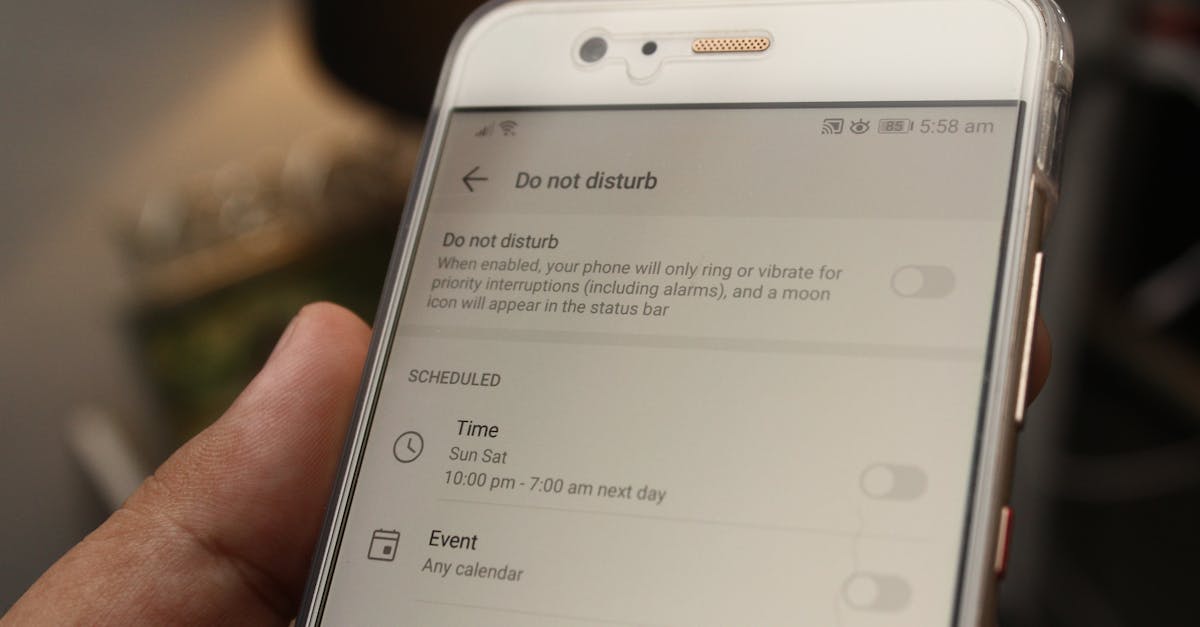In today’s fast-paced business world, relying on manual invoicing can feel like trying to navigate a busy highway without GPS. As our operations grow, so do the complexities of billing and invoicing. Many of us might experience confusion over billing discrepancies or frustration from constant communication breakdowns. If this sounds familiar, it might be time to reassess our invoicing methods.
In today’s fast-paced business world, relying on manual invoicing can feel like trying to navigate a busy highway without GPS. As our operations grow, so do the complexities of billing and invoicing. Many of us might experience confusion over billing discrepancies or frustration from constant communication breakdowns. If this sounds familiar, it might be time to reassess our invoicing methods.
Recognizing the signs that we've outgrown manual invoicing is crucial for maintaining efficiency and professionalism. From time-consuming errors to missed revenue opportunities, these issues can significantly impact our bottom line. In this article, we’ll explore the top five signs indicating it's time for a change and provide practical solutions to streamline our invoicing process. Let’s dive in and discover how we can enhance our operations and reclaim valuable time.
Overview of Manual Invoicing
Manual invoicing entails the execution of billing processes without automated systems, relying on paper documents and human input. This method often leads to several inefficiencies, such as increased time spent on billing tasks, frequent errors, and delayed payment processing. Many businesses experience billing discrepancies, which result in customer dissatisfaction and wasted resources.
In a manual invoicing environment, communication lapses frequently occur. We depend on email or phone calls to relay important updates, which can slow down operations and create misunderstandings about service status. These obstacles hinder our ability to maintain strong relationships with clients, ultimately affecting our bottom line.
Moreover, manual processes contribute to lost revenue opportunities. Without automated tracking for extra services or supplies, we miss chances to charge clients appropriately. The inability to separate service from chemical costs can obscure pricing transparency, negatively impacting trust and profit margins.
Recognizing these challenges is essential for any business aiming to thrive in a competitive landscape. Adopting automated invoicing solutions not only streamlines our operations but also enhances customer satisfaction through accurate, timely billing.
Sign 1: Increased Errors and Inaccuracies
Increased errors and inaccuracies signify manual invoicing has become inefficient. These issues directly impact cash flow, operational effectiveness, and stakeholder trust.
Impact on Business Operations
Manual invoicing often leads to errors such as incorrect data entry, duplicate payments, lost invoices, or fraudulent billing. These inaccuracies create financial discrepancies, resulting in overpayments or missed payments. According to estimates, manual processes increase operational costs due to delays, reduced productivity, and necessary corrections. Furthermore, the manual handling of invoices reduces transparency and trust among stakeholders, as offline processing hinders real-time tracking of invoice statuses. The cumulative effect includes slowed cash flow, diminished operational efficiency, and a heightened risk of monetary loss.
Solutions to Reduce Errors
To counteract errors inherent in manual invoicing, we recommend adopting automated invoice processing systems. Automation minimizes human intervention, speeds up data entry through standardized formats, and streamlines approval workflows in real-time. By maintaining proper documentation, these systems enhance compliance and reduce data discrepancies. Additionally, structured digital workflows improve collaboration between suppliers and finance teams, fostering trust and expediting processes. Transitioning to automation not only boosts productivity but also significantly mitigates common invoicing challenges.
Sign 2: Time Consumption for Invoicing Tasks
Manual invoicing can significantly drain our time, obstructing our ability to focus on growth and strategy. Recognizing when invoicing consumes too many resources is crucial for our business efficiency.
Assessing Time Spent on Invoicing
We must evaluate the amount of time dedicated to invoicing tasks. If we notice excessive hours spent on manual data entry, tracking multiple spreadsheets, and rectifying errors, it signals deeper inefficiencies. Research indicates that businesses can lose up to 30% of their revenue due to invoicing errors and payment delays. Moreover, if we're often juggling invoicing instead of servicing clients or expanding operations, it's time to reassess our invoicing methods.
Efficient Invoicing Solutions
Transitioning to automated invoicing solutions is essential for addressing time-related inefficiencies. Automation software facilitates streamlined invoice creation, dispatch, and payment tracking, which reduces manual input and the errors associated with it. Using cloud-based and AI-driven tools, we can process larger volumes of invoices swiftly without necessarily increasing staff levels. Automated solutions enhance workflow efficiency, minimize delays, and assure better financial accuracy. This shift not only liberates valuable time and resources but also increases cash flow and customer satisfaction, empowering us to scale our operations effectively.
Sign 3: Difficulty in Tracking Payments
As our business grows, tracking payments manually becomes more complex and prone to errors. This transition often highlights significant challenges, including lost invoices and missed payments, ultimately leading to revenue leakage.
Consequences of Poor Payment Tracking
Poor payment tracking brings about several critical consequences that directly impact our bottom line:
- Revenue loss: Missing or late payments diminish cash flow, disrupting business operations.
- Increased errors: Manual processes often result in mistakes when entering payment data or reconciling accounts.
- Operational inefficiency: Time-consuming reconciliation draws resources away from strategic business growth.
- Cash flow unpredictability: A slow ability to confirm payment statuses delays financial planning and vendor payments.
Implementing Better Tracking Systems
To combat these issues, we transition from manual invoicing to automated invoicing and payment tracking systems. The benefits include:
- Automated invoice generation and distribution: This reduces the time and errors associated with manual entry.
- Real-time payment tracking: Automated systems provide instant updates on payment status, minimizing oversights and improving cash flow.
- Reduced revenue leakage: Automation ensures that all invoices and payments are tracked accurately, enhancing financial accuracy.
- Scalability without extra hires: Automation manages increased transaction volumes without the need for additional bookkeeping staff.
Utilizing automated accounts payable and invoicing software streamlines approvals, decreases manual errors, and enhances our oversight of payments. This shift transforms payment tracking from a tedious manual process into an efficient, transparent workflow.
Sign 4: Lack of Scalability
Scalability issues arise when manual invoicing cannot support increasing business demands. As invoice volumes grow, manual processes become a bottleneck, hindering overall efficiency.
Growth Limitations with Manual Processes
Manual invoicing significantly impacts business growth due to its linear resource requirements. Processing each invoice manually typically averages about five invoices per hour per employee. As our business expands, so does the volume of invoices, necessitating proportional increases in staff and resources, which is inefficient and costly. This inefficiency manifests in delayed payments, strained supplier relationships, and an increased likelihood of errors, such as duplicates or inaccuracies. Consequently, financial operations slow, costs rise, and relationships with clients and suppliers weaken.
Tools for Scalable Invoicing
Adopting automated accounts payable (AP) and invoice management systems addresses scalability challenges effectively. These tools streamline invoice data capture, approval workflows, and payment processing, drastically reducing manual effort and minimizing errors. Real-time tracking and analytics enhance visibility into cash flow and payment status, allowing us to manage high invoice volumes without corresponding increases in personnel. Scalable solutions improve processing times, accuracy, and compliance with tax regulations. Transitioning from basic accounting tools, such as spreadsheets or entry-level software, to sophisticated enterprise resource planning (ERP) systems or cloud-based AP automation platforms provides flexibility for future growth and integration with other financial systems.
Sign 5: Client Dissatisfaction and Delays
Client dissatisfaction often stems from manual invoicing practices, which can lead to delays and frustrations. Inefficient invoicing processes negatively impact our relationships with clients and ultimately affect our bottom line.
Feedback from Clients on Invoicing
Frequent complaints from clients about delayed invoices or inaccuracies signal significant dissatisfaction. Clients expect clear, consistent communication and timely invoicing. When these expectations are not met, trust diminishes and relationships sour. A 2021 survey indicated that 70% of clients prefer automated invoicing due to speed and clarity. Recognizing feedback patterns helps identify pain points, allowing us to make the necessary adjustments promptly.
Improving Client Experience
Streamlining our invoicing processes through automation significantly enhances client experiences. Implementing automated invoicing reduces delays by providing timely and accurate bills, boosting trust and satisfaction. Real-time communication tools improve interaction, offering clients immediate updates on their invoices and payment status. This proactive approach can transform our invoicing process from a point of frustration to an opportunity for strengthening client relationships. By embracing automation, we position ourselves to foster trust, enhance service delivery, and ultimately drive client loyalty.
Conclusion
Recognizing the signs that we've outgrown manual invoicing is the first step toward improving our business operations. By addressing issues like errors time consumption payment tracking scalability and client dissatisfaction we can unlock significant benefits. Transitioning to automated invoicing solutions not only streamlines our processes but also enhances our relationships with clients.
As we embrace these changes we position ourselves for growth and efficiency in an increasingly competitive landscape. Let's take action now to transform our invoicing practices and pave the way for a more prosperous future.
Frequently Asked Questions
What are the main challenges of manual invoicing?
Manual invoicing presents various challenges, including billing discrepancies, communication breakdowns, and inefficiencies. These problems can lead to inaccurate data entry, delayed payment processing, and increased operational costs.
How can manual invoicing affect a company's revenue?
Inefficiencies in manual invoicing can result in lost revenue opportunities due to errors and delays, costing businesses up to 30% of their potential earnings. Increased time spent on billing tasks undermines cash flow and operational effectiveness.
What signs indicate inefficiencies in invoicing?
Signs of invoicing inefficiencies include increased errors, excessive time spent on tasks, difficulty tracking payments, lack of scalability, and client dissatisfaction. Recognizing these signs is crucial for making necessary improvements.
How can automation improve invoicing processes?
Automation minimizes human intervention in invoicing, which enhances accuracy, speeds up payment processing, and improves collaboration among teams. It also allows businesses to handle larger invoice volumes, increasing efficiency and customer satisfaction.
Why is tracking payments manually problematic?
Manual payment tracking can lead to complexities and errors, resulting in lost invoices and missed payments. This can cause revenue leakage, operational inefficiency, and unpredictable cash flow, hindering business growth.
👉 Book a Demo of ProValet Now to see how automation can help your business keep customers safe and satisfied all summer long.








